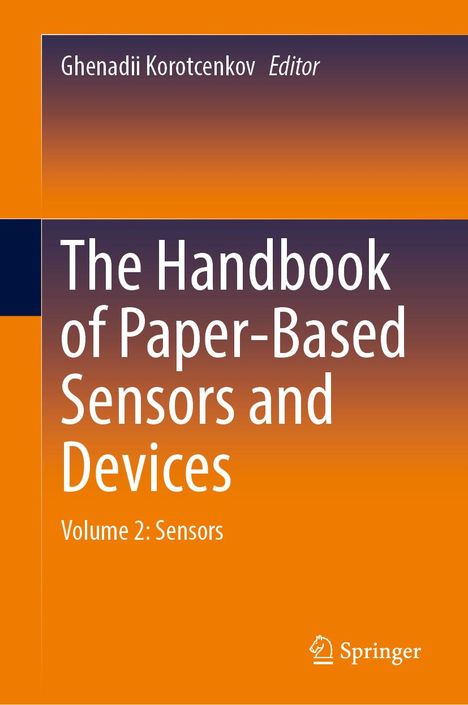The Handbook of Paper-Based Sensors and Devices, Gebunden
The Handbook of Paper-Based Sensors and Devices
- Volume 2: Sensors
Sie können den Titel schon jetzt bestellen. Versand an Sie erfolgt gleich nach Verfügbarkeit.
- Herausgeber:
- Ghenadii Korotcenkov
- Verlag:
- Springer-Verlag GmbH, 02/2026
- Einband:
- Gebunden
- Sprache:
- Englisch
- ISBN-13:
- 9783032027122
- Artikelnummer:
- 12358175
- Umfang:
- 824 Seiten
- Sonstiges:
- XIX, 824 p. 278 illus., 245 illus. in color.
- Erscheinungstermin:
- 11.2.2026
- Hinweis
-
Achtung: Artikel ist nicht in deutscher Sprache!
Weitere Ausgaben von The Handbook of Paper-Based Sensors and Devices |
Preis |
|---|---|
| Buch, Gebunden, Englisch | EUR 234,68* |
Klappentext
This collection on paper-based sensors is the second volume of a four-volume Handbook devoted to the consideration of all aspects of paper devices from the synthesis of nanocellulose and paper manufacturing to the discussion of the features of their fabrication and use. In particular, the second volume describes all types of sensors that can be fabricated based on paper and cellulose and presents a comprehensive and detailed analysis of all aspects of the fabrication and application of these sensors in environmental monitoring, biomedicine, healthcare, agriculture, food industry, and other fields. As for paper bioengineering and environmental engineering, as well as paper electronic devices intended for electronics, optoelectronics, and energy technology, they are considered in the subsequent volumes.
The books allow the reader to understand the current state of paper-based sensors and devices and the role of paper in the development of a new generation of sensors and electronic devices with increased efficiency for various purposes.
World-renowned experts with extensive experience in developing nanocellulose-based technologies, paper sensors and electronic devices are among the authors of this collection. The Handbook of Paper-Based Sensors and Devices is an authoritative reference for materials scientists, biologists, physicians, and biochemical engineers as well as for chemical, biomedical, environmental, electronics, agriculture engineers and the food biotechnologists, working in R&D industry and academia. It further stands as a valuable teaching tool for university faculty and students working in chemical sensing, biosensing, biomedicine, biomaterials, environment protection and remediation.
- Illustrates the unique properties of paper and nanopaper make them adaptable for use in a wide range of applications;
- Considers in detail the synthesis / modification of nanocellulose intended for use in various fields;
- Analyzes the specifics of manufacturing paper-based flexible and wearable sensors and systems for various applications.

